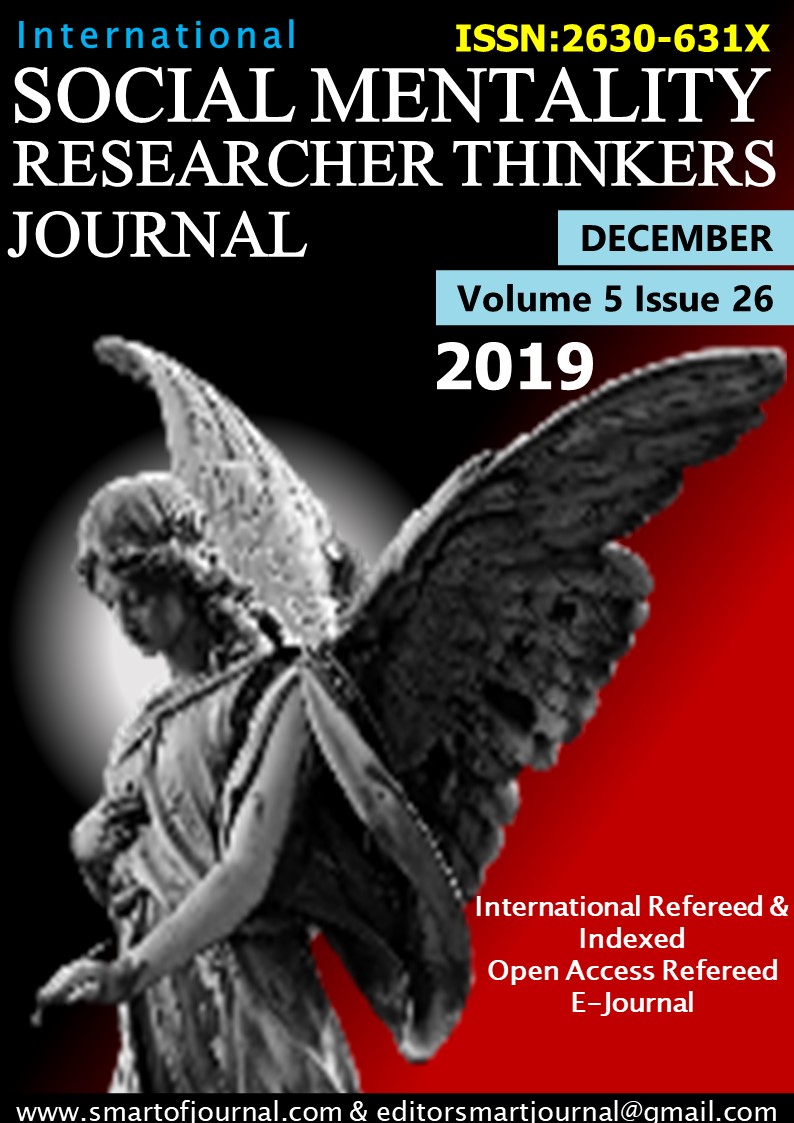Author :
Abstract
Takım çalışması, günlük hayatta hemen her alanda uygulanabilir. Takım çalışması ortak bir hedefe ulaşmak için birlikte çalışan grup üyeleri olarak tanımlanabilir. Takım çalışması ve buna bağlı olarak takım performansı, şirketlerin staretejilerini önemli derecede etkilemektedir. Takım çalışmasının başarılı bir şekilde uygulanması sonucunda takım içerisinde çalışanların performanslarının artacağı dolayısıyla işletmenin daha verimli olmasına fırsat yaratarak rakipleri ile olan yarışta onları ön plana çıkaracaktır. Takım çalışmasının getirdiği en büyük avantaj, çalışanların toplam performansının büyük bir sinerji yaratacak olmasıdır. Bu araştırmada, takım çalışmasının çalışan performansı üzerindeki etkisi incelenmiştir. Likert Ölçeği'ne sahip 32 soruyu içeren bir anket kullanılmıştır. Artvin ve ilçelerinde polis teşkilatında çalışan 107 görevliye anket verilmiş toplanan veriler SPSS.22 ile analiz edilmiştir. Bu çalışma seçilen tüm faktörlerin ekip çalışması ile anlamlı bir ilişki içinde olduğunu göstermiştir. Bu araştırmada, Etkin İletişim, Güven Düzeyi, Liderlik ve Hesap Verebilirliğin çalışan performansı üzerinde olumlu ve önemli bir etkiye sahip olduğu tespit edildi.
Keywords
Abstract
Teamwork can be easily practiced in almost all areas of daily life. Teamwork can be defined as group members working together to achieve a common goal. Teamwork and consequently team performance have a significant impact on the strategy of companies. As a result of the successful implementation of the teamwork, the performance of the employees within the team will increase, thus enabling them to be more productive and will make them stand out in the race with their competitors. The biggest advantage of teamwork is that the performance of the employees will create a great synergy. In this study, the effect of teamwork on employee performance was investigated. A questionnaire including 32 questions with Likert Scale was used. A questionnaire was given to 107 officers of the police in Artvin and its districts and the collected data were analyzed with SPSS.22. This study showed that all selected factors had a significant relationship with teamwork. This study found that Effective Communication, Confidence Level, Leadership and Accountability have a positive and significant effect on employee performance.
Keywords
- Doyle, A., (2019). Teamwork Skills List and Examples, https://www.thebalancecareers.com/list-of-
- Doyle, A., (2019). Teamwork Skills List and Examples, https://www.thebalancecareers.com/list-of- teamwork-skills-2063773. (23.10.2019).
- Alderfer, C.P. (1977). Group and intergroup relations. In J.R. Hackman & J.L. Suttle (Eds.), Improving the quality of work life (pp. 227–296). Palisades, CA: Goodyear.
- Argote, L., & McGrath, J.E. (1993). Group processes in organizations. In C.L. Cooper & I.T.Robertson (Eds.), International review of industrial and organizational psychology (Vol. 8, pp. 333– 389). New York: John Wiley & Sons.
- Bassett-Jones, N. (2005). The paradox of diversity management, creativity and innovation. Creativity and Innovation Management, 14(2), 169–175.10.1111/caim.2005.14.issue-2.
- Farh, C. I., Seo, M.-G., & Tesluk, P. E. (2012). Emotional intelligence, teamwork effectiveness, andjob performance: the moderating role of job context. Journal of Applied Psychology, 97(4), 890.
- Hackman, J. R. (1987). The design of work teams. In J. Lorsch (Ed.). Handbook of organizational behavior (pp. 315–342). Englewood Cliffs, NJ: Prentice-Hall.
- Hackman, J.R. (1992). Group influences on individuals in organizations. In M.D. Dunnette & L.M.Hough (Eds.), Handbook of industrial and organizational psychology (Vol. 3, pp. 199–267). Palo Alto, CA: Consulting Psychologist Press.
- Haneberg. L, 2012, Accountability and Ownership, MPI, (pp. 1-6). http://managementcraft.typepad.com/Accountability%20and%20Ownership%20Article.pdf.
- Hollenbeck, J.R., Ilgen, D.R., Sego, D.J., Hedlund, J., Major, D.A., & Phillips, J. (1995). Multileveltheory of team decision-making: Decision performance in teams incorporating distributed expertise. Journal of Applied Psychology, 80, 292–316.
- Hughes, A. M., Gregory, M. E., Joseph, D. L., Sonesh, S. C., Marlow, S. L., Lacerenza, C. N., &Salas, E. (2016). Saving lives: A meta-analysis of team training in healthcare. Journal of Applied Psychology, 101, 1266–1304.
- Hülsheger, U. R., Anderson, N., & Salgado, J. F. (2009). Team-level predictors of innovationat work:A comprehensive meta-analysis spanning three decades of research. The Journal of Applied Psychology, 94, 1128–1145.
- The Elorus Team (2018). Importance of team management and collaboration in the workplace, https://www.elorus.com/blog/team-management-definition-the-importance-and-benefits-of-
- teamwork-and-collaboration-in-the-workplace/. (23.10.2019).
- Kozlowski, S.W.J., Gully, S.M., Salas, E., & Cannon-Bowers, J.A. (1996). Team leadership anddevelopment: Theory principles, and guidelines for training leaders and teams. In M. Beyerlein, D.Johnson, & S. Beyerlein (Eds.), Advances in interdisciplinary studies of work teams: Team leadership (Vol. 3, pp. 251–289). Greenwich, CT: JAI Press.
- Kozlowski, S.W.J., Gully, S.M., Nason, E.R., & Smith, E.M. (1999). Developing adaptive teams: A theory of compilation and performance across levels and time.
- Kozlowski, S.W.J., & Bell, B.S. (2003). Work groups and teams in organizations. In W.C. Borman,D.R. Ilgen, & R.J. Klimoski (Eds.), Handbook of psychology: Vol. 12. Industrial and organizational psychology (pp. 333–375). London: Wiley.
- Pounder JS, & Coleman M. Women-better leaders than men? In general and educational management it still “all depends”. Leader Organ Dev J 2008; 23: 122-133.
- Rico, R., Hinsz, V. B., Burke, S., & Salas, E. (2017). A multilevel model of multiteam motivation and performance. Organizational Psychology Review, 7(3), 197–226.
- Robbins, S.P. & Judge, T.A. (2007). Organizational behaviour, Twelfth edition, NewJersey Pearson Educational Inc.
- Salas. E, Dickinson. T. L, Converse. S. A, & Tannenbaum. S. I, 1992, Toward an understanding ofteam performance and training, Teams: Their t raining and performance, pp. 3-29. (04.09.2015).
- Salas, E., Dickinson, T.L., Converse, S.A., & Tannenbaum, S.I. (1992). Toward an understanding ofteam performance and training. In R.W. Swezey & E. Salas (Eds.), Teams: Their training and performance (pp. 3–29). Norwood, NJ: Ablex.
- Sundstrom, E., De Meuse, K. P., & Futrell, D. (1990). Work teams: Applications and effectiveness. The American Psychologist, 45, 120–133.
- Thomson AM, Perry JL, & Miller TK. Conceptualizing and measuring collaboration. J Public Admin Res Theory 2009; 19: 23- 56.
- West, M. A. (2012). Effective teamwork: Practical lessons from organizational research: John Wiley & Sons.
